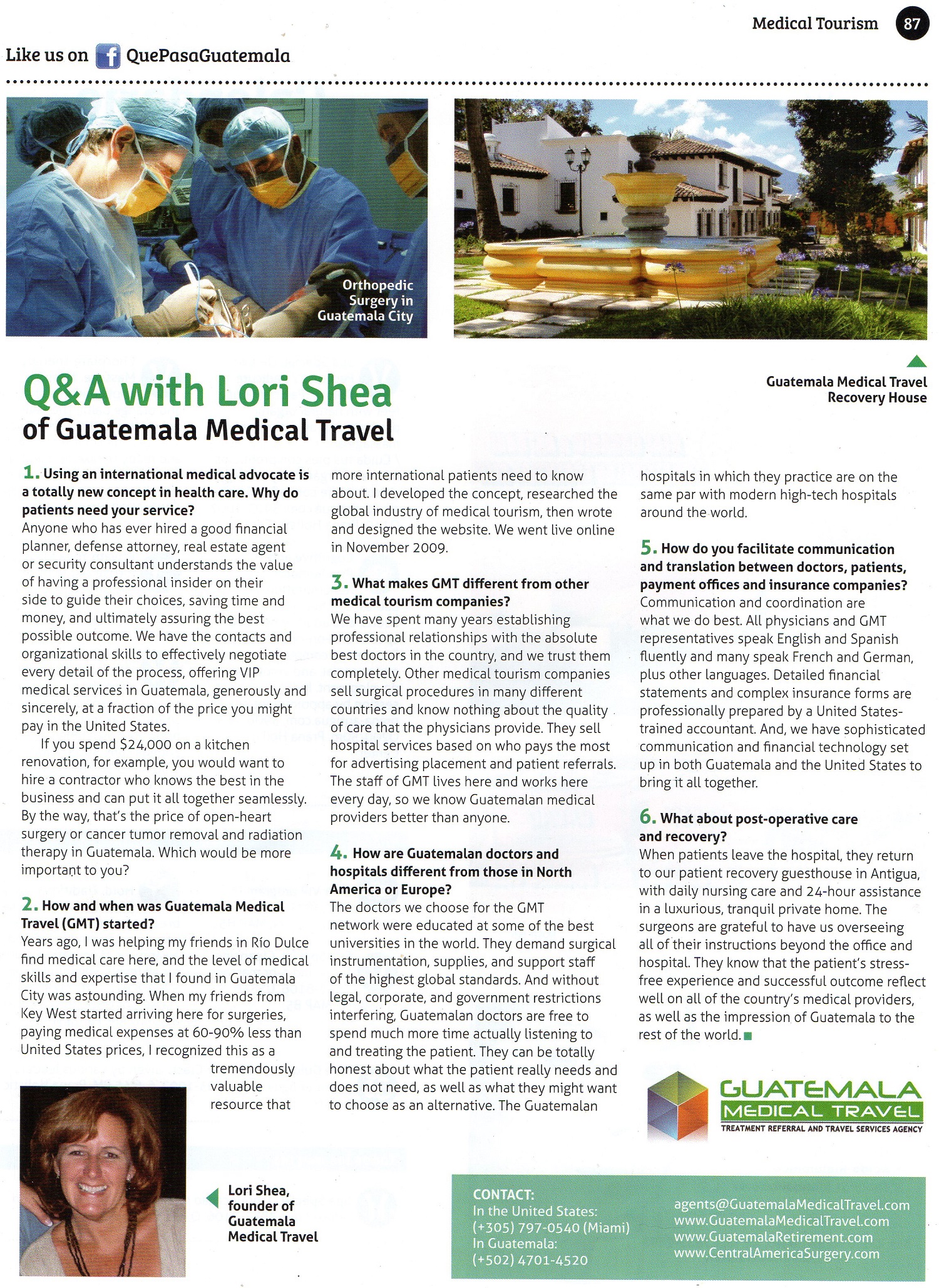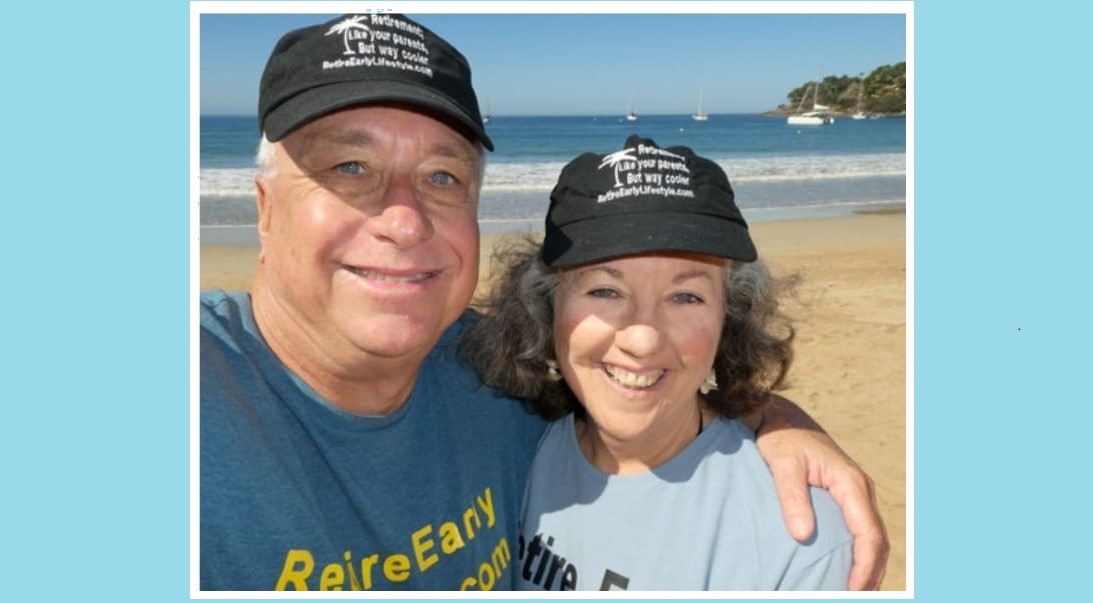Medical Travel
In The News
Revue Magazine in Guatemala, Articles by Lori Shea
Guatemala Medical Travel Newsletter Stories
Interviews with Lori Shea
Que Pasa Magazine

I developed the concept, researched the global industry of medical tourism then wrote and designed the first GMT website. We went live on-line in November 2009.
Retire Early Lifestyle
When I was living aboard in Rio Dulce, Guatemala, I helped some local ex-pat retirees to find medical care in Guatemala City. At a very reasonable price, I found the level of medical skills and expertise there just astounding. The patients, my friends, were amazed to be treated with respect, compassion and patience by a medical specialist. Some said, for the first time in their lives. I recognized this as a valuable resource, a gold mine of affordable high-quality health care that more international patients need to know about.
We work with about 50 medical specialists and all of them speak English fluently or at least 80%. It is absolutely essential to have clear communication with your medical provider. I have also brought European patients to a German speaking gastroenterologist and a French speaking ear-nose-throat specialist in Guatemala City.
The brightest Guatemalan students are sent to some of the best universities in the world. In the U.S. they earn degrees and certifications from schools like Harvard, Colombia, Stanford, and Johns Hopkins; however, when the student visa expires, they have to return to their home countries. We are fortunate to have extremely well-educated and skilled physicians with global credentials right here in Guatemala City.
The biggest challenge is educating patients about the quality of skills and experience of the Guatemalan doctors, going against their initial resistance to seek out care beyond their hometown in America. Once our clients experience the care and prices we offer in Guatemala, many of our patients come back 3 or 4 times and send their friends here too.
Patients want to be assured that everything will be comfortable and familiar, just like at home, and in Guatemala it is all that and more.
Communication and coordination are what we do best. Patients are actually better off coming to Guatemala and having a GMT agent to accompany them as a personal companion, nurse and secretary throughout the whole process. Every expense is listed and described in English, together with receipts, compiled into one easy-to-understand report. They return home with all of their diagnostic reports, prescriptions, proposals, receipts and instructions together in one file for easy future reference.
They could never expect to have all that information from a U.S. doctor or hospital, or get that kind VIP treatment at home.
For new patient inquiries, there is an administration fee of $400 to collect their history, create a file for them, and then present the case most accurately to the doctors in Guatemala. The fee includes airport pick-up and a nurse companion to make all the arrangements and accompany them to the doctor’s office and take notes for the progress report.
The proposal that we give to the patient includes all the surrounding expenses in detail, so the patient is certain the costs for the procedure stay within their budget.
Being foreigners here, North Americans do need to pay in advance because we would have no other way of collecting after the procedure is finished. (Like a cruise or resort vacation) The GMT agency has many resources and outlets in both countries through which the patient can pay for their medical expenses safely and easily. Our clients return home with all the receipts and forms required to request reimbursement from their insurance company.
Sometimes the doctor will require a hospital stay of two or three days. After hospital release, the patient is driven back to our own Casa Muriel patient recovery house in Antigua. Spouses and friends are always welcome because the patient will heal better in a serene home-like environment. Dental patients who are not “sick” prefer to stay at our Casa Muriel recovery house because of the comfort, location and prices.
Thankfully, nothing has ever “gone wrong” under our care. Our local medical specialists are exceedingly cautious with foreign VIP patients, knowing that the outcome of their work will be a reflection on all the medical providers of Guatemala. In fact, if patients need follow up or further treatment, most prefer to fly back here, instead of trying to get help from an American doctor.
The GMT client leaves Guatemala with a complete file of the entire treatment process, and their Guatemalan doctor will gladly arrange a video call or share images in a cloud file to assure seamless continuation of care for their patient.


